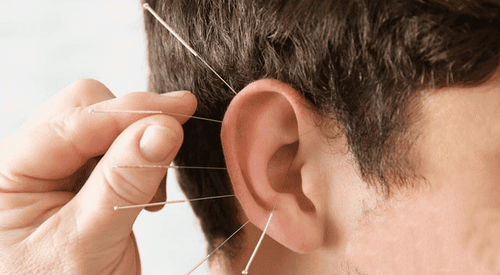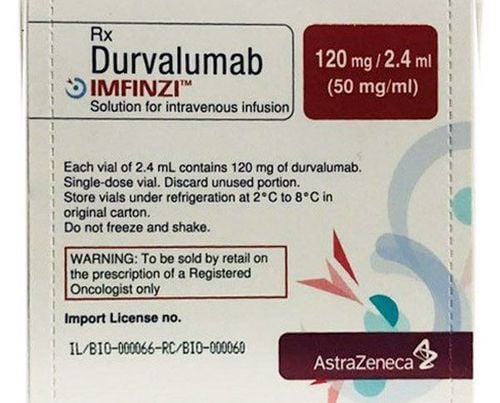This is an automatically translated article.
2019 saw an outbreak of documented cases of serious lung conditions linked to the use of e-cigarette devices. The specific cause of this "epidemic" has not been determined, it is not clear whether it is due to the nicotine in e-cigarettes or tetrahydrocannabinol (THC) - the main psychoactive substance of cannabis - and whether these This toxic product is sold on the street or in retail stores.1. E-cigarettes or "vaping"
Electronic cigarettes have many names, and are very diverse in form, from traditional cigarettes, pen to USB, some use batteries, others charge by electricity.
E-cigarettes do not burn the filament, but instead have small chambers filled with liquid, which are either flavoring agents, nicotine, tetrahydrocannabinol (THC), or cannabinoid oil (CBD) and other chemicals. . This liquid is heated to vaporize that the user inhales, this is also the reason why e-cigarettes are often called vaping.
Although toxic types and concentrations vary by brand and device, all e-cigarette devices contain harmful substances. E-cigarettes have only been on the US market since 2016, so studies on the long-term risks of these products are limited.
Because of this, the US Food and Drug Administration took initial measures to control these products in 2016, but regulations on liquid ingredients in e-cigarettes and equipment is still somewhat limited.
As of September 2019, there have been more than 800 recorded cases of serious lung disease, with 12 deaths in the United States. All of these patients had in common that they had used e-cigarettes, however, no association with a specific e-cigarette device or liquid has been confirmed. Reports from the Centers for Disease Control and Prevention (USA) to date indicate that most patients from using products containing THC, but many others also used nicotine. Some of these unfortunate patients only used nicotine-containing e-cigarettes.

Thuốc lá điện tử chứa nhiều rủi ro về sức khỏe
Also because the specific product or ingredient that causes the disease has not been identified, the Centers for Disease Control and Prevention (USA) and the US Food and Drug Administration recommend that people stop using these products. this product. In case you experience any symptoms such as cough, shortness of breath, chest pain, fatigue or abdominal pain, see your doctor immediately.
Many people turn to e-cigarettes as a way to quit smoking, and there is little evidence that it actually works. However, e-cigarettes are never considered as the first method to quit smoking that users think of, also due to the risks and extent of the recent outbreak of dangerous lung disease, you should avoid using them. e-cigarette use, at least for the time being.
The US Food and Drug Administration (FDA) has not yet agreed to approve e-cigarettes as a smoking cessation measure. Experts and FDA recommend that users use clinically proven smoking cessation methods. If you've ever used e-cigarettes, don't go back to using traditional cigarettes instead of using e-cigarettes, but choose remedies like nicotine patches, gum, lozenges and nasal sprays.
2. Smokeless tobacco
Smokeless tobacco products have many names and varieties, they contain tobacco fibers or tobacco blends.
Chewing tobacco, including the following forms:
Loose leaves Compressed tobacco fibers, known as tobacco cakes The tobacco is twisted together in the shape of a rope, commonly known as a cigarette roll Chewing tobacco is placed in the middle cheeks and gums, usually the user will spit the juice, but long-term users often swallow a part of this tobacco juice.
Cigarettes snuff. This tobacco comes as a finely ground wet or dry powder, and some brands are also packaged in ready-to-go bags.
People often inhale or swallow dried tobacco powder, or another way to use it, is to insert the dry powder between the gums and lips or inner cheeks, and then let the powder slowly dissolve.
Snus is a lozenge originating from Sweden, usually the manufacturer will pack the moist powder in a bag, the user holds the medicine in the inner cheek to let the medicine slowly dissolve, the wrapper will then be thrown away. . Tobacco companies often market the snus to smokers because it is allowed in smoke-free areas, but public health activists are concerned that the snus is doing nothing to reduce the number of people. use tobacco.
Cigarettes are compressed powder tobacco, it is like a small hard candy that melts in the mouth.

Thuốc lá không khói có chứa sợi thuốc lá hoặc hỗn hợp thuốc lá.
3. Dangers of smokeless tobacco products
Long-term use of smokeless tobacco contributes to dangerous diseases, including cancer and cardiovascular disease.
Some smokeless tobacco products contain 3 to 4 times more nicotine than regular cigarettes, not only that, but these products have ingredients that increase the risk of cancer of the oral cavity and oropharynx.
Chewing tobacco can cause white plaque – also known as leukoplakia – on the gums, tongue, or lining of the mouth. Most leukoplakia are benign, but in some cases they are an early sign of cancer. The foci of oral cavity cancer usually appear near the mucosal leukoplakia. In addition, smokeless tobacco causes dental problems and gum disease, as well as tooth decay.
Many people insist that these products are less harmful than traditional cigarettes and are effective in helping to quit smoking, but these alternatives have not been clinically proven. Please keep in mind that the FDA has not yet agreed to consider smokeless tobacco products as a means of smoking cessation.
4. Shisha – aka water pipes
Another popular tobacco substitute is Shisha, or hookahs as some call it. Around the world, hookah has a centuries-old history, especially in the Middle East, Asia and Africa.
Modern shisha usually consists of 4 main parts:
A cup placed on top, containing a mixture of tobacco and sweeteners A wide vessel containing water A tube connecting the medicine cup and water bottle A rubber tube attached to the mouthpiece, is also the location where the user "hisses" the smoke

Shisha được sử dụng phổ biến trong giới sinh viên và người trẻ tại Hoa Kỳ.
Manufacturers subdivide tobacco blends in packs for sale in a wide variety of flavors. There are also people who use hookah alone, but often there are many people smoking together, as well as sharing a mouthpiece.
In the United States, hookah is especially popular among students and young people. Unfounded beliefs about the safety of hookah make it a trend, it is said that filtered water makes cigarette smoke safer, but there is no real proof.
5. Potential danger
Shisha brings users risks such as:
Users are exposed to the same toxins as traditional cigarettes, but at much higher amounts such as carbon monoxide, heavy metals and cancer-causing chemicals, especially are:
Lung cancer Stomach cancer Bladder cancer Esophageal cancer Other medical risks include:
Cardiovascular disease Respiratory diseases such as emphysema , causing difficulty breathing Not to mention the duration of use hookah typically lasts up to 1 hour, further exposing users to more harmful substances.
Risk of spreading infectious diseases. Using the same mouthpiece among many people increases the risk of transmitting diseases and dangerous viruses, especially when people do not clean the mouthpiece carefully.
Nicotine addiction. The fibers used in hookah and traditional cigarettes contain equally high amounts of nicotine, and it is well known how addictive nicotine can be.
Smoking is the leading risk factor for morbidity and premature death in the United States. Although the number of smokers is slowly decreasing, alternatives are becoming more and more popular. Some of these products are:
Electronic Cigarettes aka "vaping" Shisha Smokeless Cigarettes These products are available in a wide range of styles, sizes and flavors.
Customers can directly go to Vinmec Health system nationwide to visit or contact the hotline here for support.
Article referenced source: cancer.net
MORE:
Lung damage from e-cigarettes Are e-cigarettes harmful and how does it work? How do e-cigarettes affect your body?













